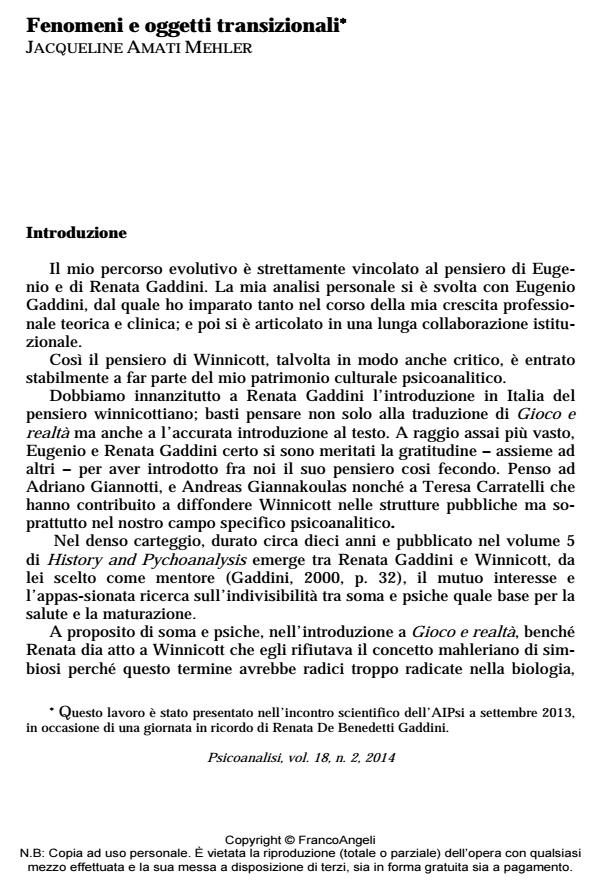Fenomeni e oggetti transizionali
Journal title PSICOANALISI
Author/s Mehler Jaqueline Amati
Publishing Year 2015 Issue 2014/2
Language Italian Pages 20 P. 59-78 File size 100 KB
DOI 10.3280/PSI2014-002005
DOI is like a bar code for intellectual property: to have more infomation
click here
Below, you can see the article first page
If you want to buy this article in PDF format, you can do it, following the instructions to buy download credits

FrancoAngeli is member of Publishers International Linking Association, Inc (PILA), a not-for-profit association which run the CrossRef service enabling links to and from online scholarly content.
In this paper, whose purpose is to recall Renata Gaddini’s work, the author reflects on the concept of the precursors of the Transitional Object (OT), one of the most original and significant contributions of Renata Gaddini. Through an exploration of the various conceptualizations by Winnicott and Klein, the paper investigates the destiny of the transitional object in its relationship with illusion and symbolization, as well as underlining how it differs from the fetish. This leads to a consideration of the clinical and technical consequences regarding the concepts of transitional object, transitional phenomena and transitional area.
Keywords: Precursor, transitional object, fetish, transitional area
- Note sul vissuto primitivo della bocca nella raffigurazione onirica Simona Di Segni, in PSICOANALISI 1/2022 pp.47
DOI: 10.3280/PSI2022-001005
Mehler Jaqueline Amati, Fenomeni e oggetti transizionali in "PSICOANALISI" 2/2014, pp 59-78, DOI: 10.3280/PSI2014-002005